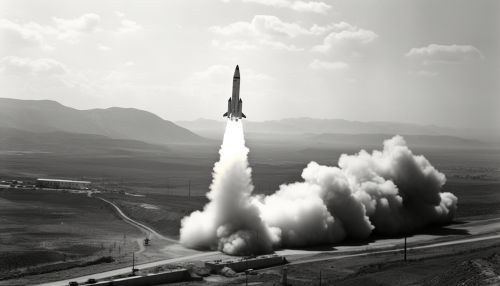Soviet space program
Origins and early development
The Soviet space program was initiated by the USSR during the Cold War. It was a comprehensive program that included multiple projects and missions, many of which were classified. The program was responsible for a number of pioneering accomplishments in space flight, including the first intercontinental ballistic missile (R-7), the first satellite (Sputnik 1), the first animal in Earth orbit (the dog Laika on Sputnik 2), and the first human in space and Earth orbit (Yuri Gagarin on Vostok 1).


Early missions and achievements
The Soviet space program's early missions were marked by both groundbreaking achievements and catastrophic failures. The launch of Sputnik 1 in 1957 marked the beginning of the space age. This was followed by the successful launch of Luna 2, the first spacecraft to reach the moon. In 1961, Yuri Gagarin became the first human to orbit Earth, a significant achievement in the history of space exploration.
Manned missions
The Soviet space program was also responsible for a number of significant advancements in manned space flight. The Vostok program was the first series of Soviet manned space missions, which saw Yuri Gagarin become the first human in space. This was followed by the Voskhod program, which included the first multi-person mission and the first spacewalk.
Lunar and planetary missions
The Soviet space program also included a number of lunar and planetary missions. The Luna program was responsible for a number of firsts, including the first impact on the Moon and the first images of the far side of the Moon. The Mars program and the Venera program were attempts to explore Mars and Venus respectively, with varying degrees of success.
Legacy and impact
The Soviet space program had a significant impact on the field of space exploration. Despite its eventual dissolution, the program's achievements continue to be recognized and its legacy continues to influence current space exploration efforts. The program's emphasis on scientific research and technological advancement laid the groundwork for future space exploration missions.
